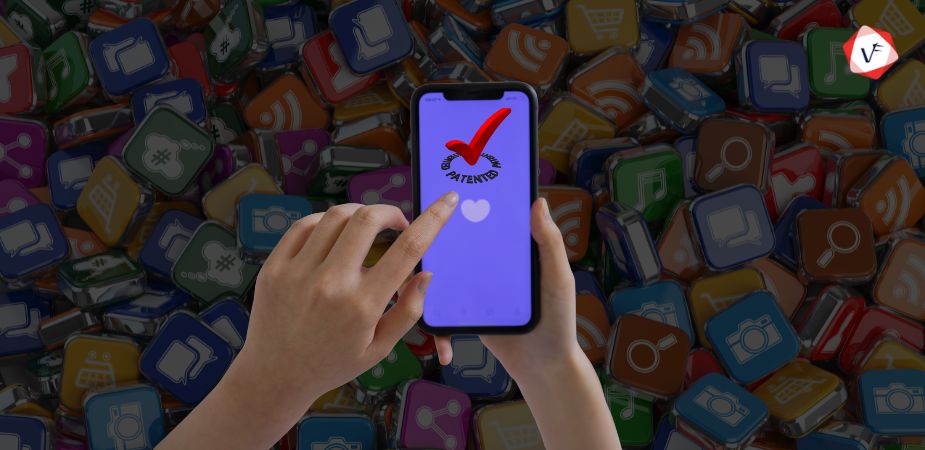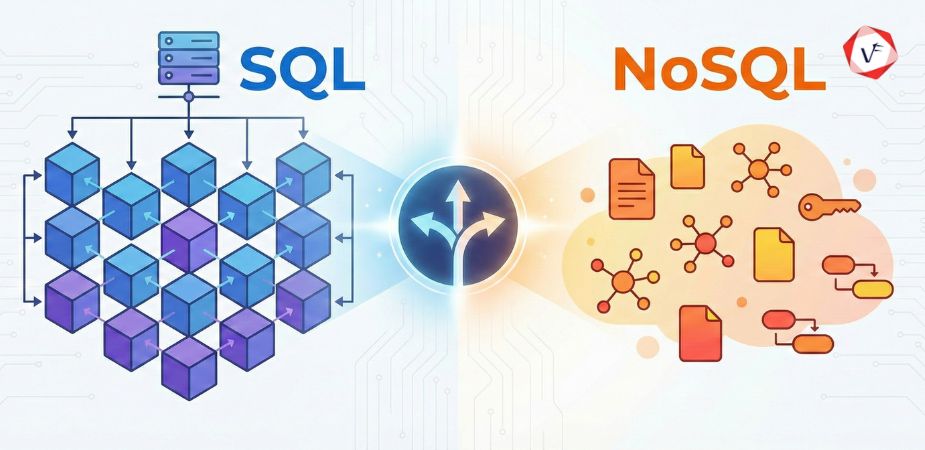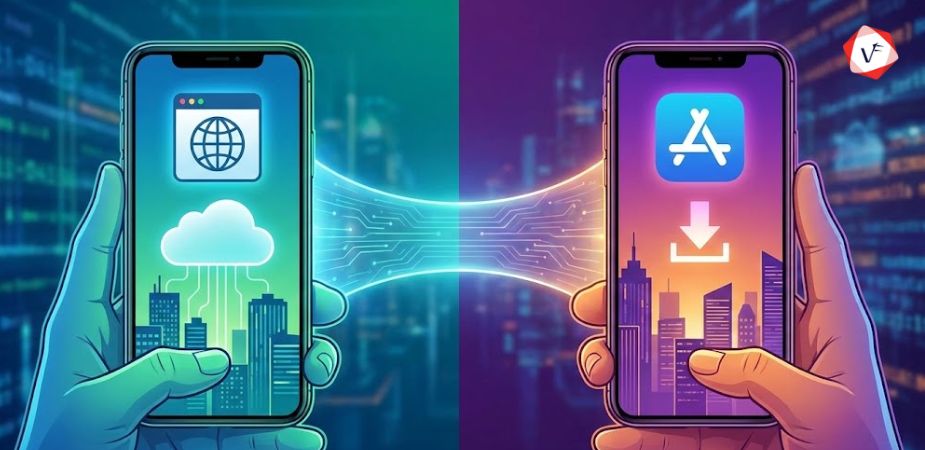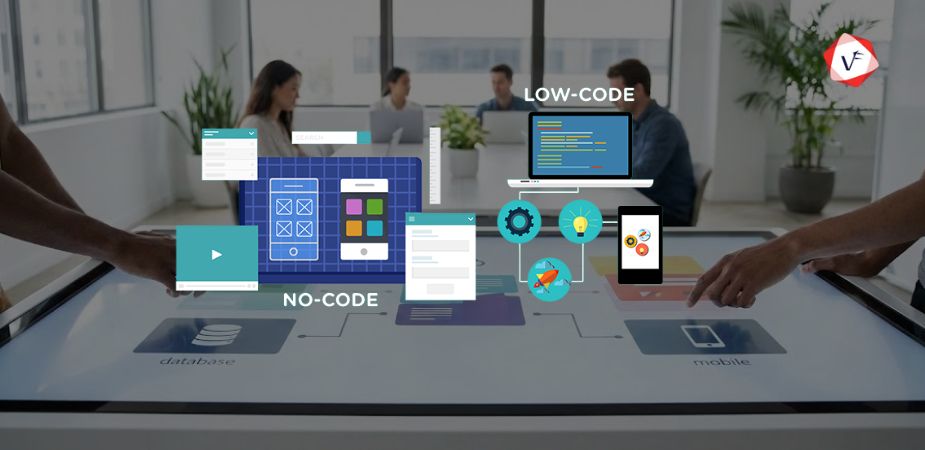- October 31, 2025 11:18 am
- by Safvana
- October 31, 2025 11:18 am
- by Aruthra

Complete guide to patenting your app idea in 2025. Learn the step-by-step process, costs, requirements, and legal protection strategies for mobile app inventions.
So you've got a brilliant app idea. Maybe it solves a problem no one's tackled yet. Maybe it improves something that already exists. Or maybe it's just so clever that you know people will love it. Whatever the case, your next question is likely: "How do I protect it?" That's where patenting comes in.
But here's the thing, you can't patent "just an idea." Patents are granted to inventions that are detailed, functional, and new. That means you'll need to go a few steps beyond just a concept.
This blog is a complete, easy-to-follow guide to help you understand how to patent your app idea in 2025, even if you've never dealt with legal stuff before. Let's dive in.
A patent is a legal protection given by the government to inventors. When you patent something, you're saying, "I made this, and no one else can use, sell, or copy it without my permission."
When it comes to mobile apps, you're not usually patenting the entire app as a whole. You're usually patenting the function, the technology, or the method that makes your app different from others.
You're basically claiming ownership over the unique way your app works—not just the idea of the app.
It's a question that trips a lot of people up. No, you can't patent just an idea. Saying "I want to build an app that helps people learn languages by chatting with AI" is an idea—but it's too general to be patented.
To get a patent, you need to show:
The more specific you are, the better chance you have of getting a patent.
Not every part of your app is patentable. Here's what you usually can patent:
Processes or methods: If your app uses a new way of doing something—like matching users, storing data, or generating results—that could be patentable.
Algorithms: If you've written a unique algorithm that powers a specific feature in your app, you might be able to patent that.
Technical solutions: If your app solves a technical problem in a new way, that could be patentable.
User interface designs: Sometimes, if the look and feel of your app is totally new and improves user experience, you can get a design patent to protect it.
However, you can't patent basic things like:
Here's a truth not many people talk about: Not everyone needs a patent.
Filing a patent can be expensive, time-consuming, and complicated. So before jumping in, ask yourself:
If you answered yes to some or all of these, it might be worth pursuing a patent. If your app is more like a content-based or service-based tool without much technical innovation, you might be better off using other protections.
There are two main types of patents that apply to apps. One option is a utility patent. This protects how something works. It's the most common type used for apps. If your app involves a new method of performing a task or solving a problem, this is the one you'd go for. The other type is a design patent, which protects the visual appearance. If your app has a completely new and unique design that improves the way people interact with it, you might be able to protect that too.
Some apps may qualify for both types—but most people focus on utility patents because they cover how the app functions.
Here's a simple breakdown of the steps you'll need to take.
Before you do anything official, start documenting your idea. Write down what the app does, how it works, what features it has, and what makes it unique.
Think about the user flow, what happens when someone opens the app, what steps they take, and how the app responds. The more details you have, the better. Include drawings, flowcharts, wireframes, or technical descriptions if you can. This not only helps in your application but also protects your work in case of legal disputes.
You don't want to spend time and money trying to patent something that already exists. So, the next step is to check if someone else has already patented something similar. You can use tools like Google Patents to search for existing patents. Or you can search through your country's patent office website. If you're serious about it, you might want to hire a patent professional to help with a deep search. They can compare your idea with existing patents and help you figure out if yours is new enough.
You don't need a working app to file a patent, but having a prototype can help your case. A prototype shows that your idea is not just a theory—it's a real, working model. It also helps investors, patent examiners, or legal experts understand what you're trying to do. Even a basic version is enough. Focus on showing the key feature or function that makes your app different.
If your idea is still in early stages but you want to protect it quickly, you can file a provisional patent application. It's like a placeholder. It gives you legal protection for 12 months, during which you can use the term "Patent Pending." This gives you time to refine your app, talk to investors, or test the market—without the risk of someone else patenting your idea. A provisional patent is also cheaper and simpler than a full patent. But remember—it only lasts one year. If you don't take the next step within that time, your idea is no longer protected.
This is the official process. A non-provisional patent is the full application that goes through official review. It can take years to be granted, but once approved, it gives you protection for up to 20 years (for utility patents). This application needs to be very detailed. It includes a complete technical description, claims that explain what you want to protect, and diagrams.
At this stage, it's highly recommended to work with a patent attorney. The language of a patent application is very specific. If your wording is off, your patent might get rejected—or it might not protect what you think it does.
Once you file, your application goes into a queue for review. A patent examiner will look at your file, compare it with existing patents, and decide whether your invention qualifies. This part can take time, anywhere from 1 to 3 years. Sometimes, they'll ask you for more information or suggest changes. You (or your attorney) will need to respond to these requests. Eventually, your patent will be approved, denied, or modified based on these interactions.
Patenting isn't free. A provisional application might cost a few hundred dollars if you do it yourself. A full application can cost thousands, especially if you hire a lawyer. If you're serious about your app becoming a business or attracting investors, it can be worth the cost. But for smaller ideas or early experiments, you might want to start with just a provisional patent or check out alternative methods of safeguarding it.
One common mistake is sharing your app idea publicly before protecting it. Once it's out in the open—whether through a pitch, demo, or app store listing—it becomes harder (and sometimes impossible) to patent.
Another mistake is trying to patent a feature that's already common. For example, adding a chatbot or a video call feature to your app isn't enough. There must be a new way of doing it that no one else has claimed. Also, don't assume you can just write a quick application and be done. Patent law is complicated. One wrong sentence can weaken or ruin your claim.
Patents are powerful, but they aren't the only way to protect your app. Here are a few other strategies:
Non-Disclosure Agreements (NDAs) – Have anyone who works with you—developers, freelancers, or investors—sign an NDA before you share your idea. It keeps your idea private and gives you legal backup if someone tries to steal it.
Copyrights – Once you write code, design screens, or create original content for your app, it's automatically protected under copyright. You don't even have to apply for it in most countries. Just make sure you keep proof of when you created the work.
Trademarks – If you've created a unique name, logo, or slogan for your app, you can trademark it. This helps protect your brand identity and stops others from copying your name.
Trade Secrets – If your app uses a unique method or formula, you might keep it secret rather than patenting it. Think of it like Coca-Cola's recipe. This only works if you can keep it truly confidential.
No, you cannot patent just an idea. You need to show how the app works, what the key features are, what makes your method or process new, and how it's different from anything else out there. The more specific you are, the better chance you have of getting a patent.
You can patent processes or methods, unique algorithms, technical solutions, and user interface designs. However, you cannot patent common features, general business ideas, or anything that already exists.
A provisional application might cost a few hundred dollars if you do it yourself. A full non-provisional application can cost thousands, especially if you hire a patent attorney. The investment depends on the complexity of your app and whether you work with legal professionals.
A provisional patent is a placeholder that gives you legal protection for 12 months. It allows you to use the term "Patent Pending" while you refine your app, talk to investors, or test the market. It's cheaper and simpler than a full patent but expires after one year if not followed up with a non-provisional application.
Once you file a non-provisional patent application, the review process can take anywhere from 1 to 3 years. The timeline depends on the complexity of your invention and how quickly you respond to any requests from the patent examiner.
Patenting an app idea is not for everyone. But if you've built something original, something that solves a technical problem in a new way—it can be worth the effort.
It's not just about protecting your idea. It's about turning that idea into a real asset, something that gives you legal power, business value, and peace of mind. Start small. Document your idea. Do your research. And when you're ready, talk to a professional. Your idea might just be worth protecting.
And remember, in 2025, great ideas are everywhere, but the ones that are protected? They're the ones that last.
Guaranteed Response within One Business Day!

Database Selection Guide: SQL vs NoSQL
AI Agents in Enterprise Software: How Autonomous AI is Transforming Business Operations
Manufacturing 4.0: AI and IoT Transforming Production Lines

Progressive Web Apps vs Native Apps: Which Should You Choose in 2026?

What is Citizen Development?